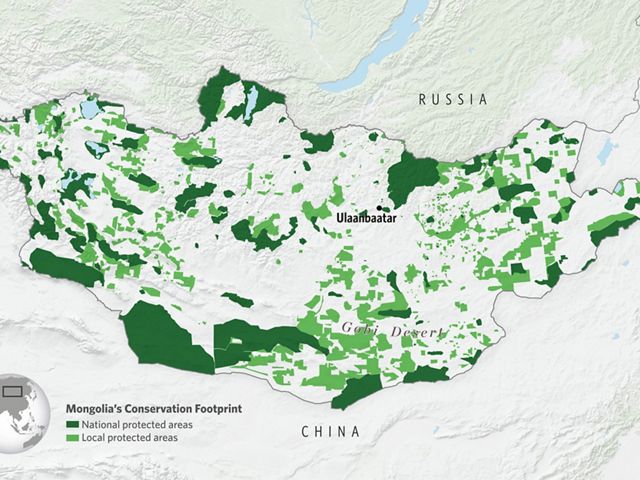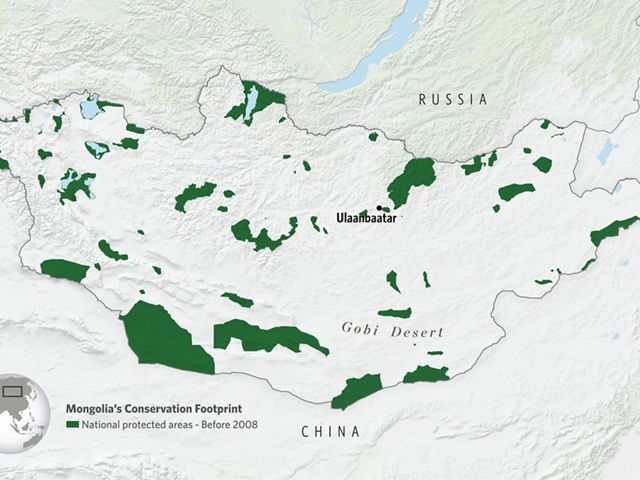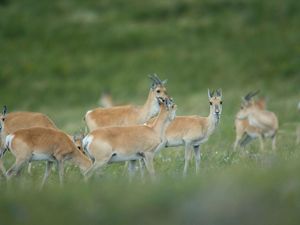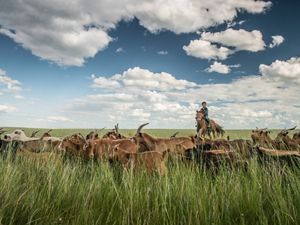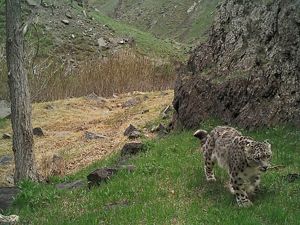Mongolia’s Amazing Grasslands
Securing Mongolia’s Grasslands for People and Nature
Quote
Grasslands are the planet’s most imperilled landscape: Almost 50% have already been degraded or lost, and only 5% are protected globally.
Help Save Grasslands in Mongolia
You can help protect one of the most threatened ecosystems on Earth.
Donate NowMongolia’s Amazing Grasslands
Building on the protection work for which The Nature Conservancy (TNC) is known, we are partnering with Indigenous people and local communities to strengthen their rights and roles as environmental stewards. We are also working with corporations and governments to apply smart infrastructure siting principles to make development more sustainable.
Conserving Mongolia’s grasslands is critical to the nation’s future and way of life, which is why TNC began working there in 2008. Recognizing their importance, 20 years ago the Mongolian government pledged to protect 30 percent of the country by 2030. Among the key lands it seeks to protect is the Eastern Steppe, which at 10 times the size of the African Serengeti is the world’s largest intact temperate grassland.
As the maps below show, this is an extraordinary expansion of nationally and locally administered protected areas, such as national parks, nature reserves and wilderness areas. In 2019, Mongolia designated 22 new protected areas totaling 8.4 million acres. These areas, which span the rugged Altai Mountains in the west to the grasslands of Dornod Province in the east, are home to rare wildlife such as snow leopards and argali sheep that require vast landscapes to thrive.
From east to west, Mongolia’s grasslands span 80 percent of the country and generate livelihoods for 200,000 families of nomadic herders. And, as the only large-scale habitat of this type in Asia, they provide a rare refuge for native wildlife such as argali sheep, gazelles, snow leopards, demoiselle cranes, cinereous vultures and saiga—a critically endangered antelope.
But Mongolia’s grasslands are at risk. Growing international demand for the country’s gold, coal and copper is undermining current conservation efforts, and the government is now poised to issue mining exploration licenses that could impact at least 20 percent of the country. In addition, growing demand for meat, wool and cashmere is resulting in the industrialization of Mongolia’s livestock sector, impacting traditional grazing practices.

Grasslands are the planet’s least protected and most altered terrestrial habitat; only 5 percent of the world’s remaining grasslands are protected. In addition, among those grasslands, the Mongolian grasslands may be well situated to resist climate-related impacts such as drought and fire due to their immense size.
Of equal importance, Mongolia’s grasslands are the only refuge in Asia large enough to support globally-important wildlife, such as the Mongolian gazelle—Asia’s last great herd of wide-ranging mammals—and the many migratory birds that rely on these lands as a resting and refueling stop during their long migrations.
Mongolia’s grasslands are one of the planet’s most critical conservation priorities—a last-chance ecosystem that must be saved for a sustainable future.
Eternal Mongolia Annoucement
The Government of Mongolia and The Nature Conservancy secure ‘Eternal Mongolia’
Read moreEternal Mongolia
In April 2024 the Government of Mongolia and TNC announced Eternal Mongolia, a conservation initiative that commits all the funding and policy commitments needed for Mongolia to achieve its 30x30 conservation ambitions while investing in a secure environmental and economic future for Mongolians.
This effort will conserve a major swath of the world’s largest intact grasslands, as well as threatened peatlands that store carbon, boreal forests, free-flowing rivers and the habitat of critically endangered species including the snow leopard.
Eternal Mongolia is the largest land and freshwater protection deal in TNC’s history, and will expand the country’s National Protected Area network, strengthen the management effectiveness of Mongolia’s entire protected area system, and support sustainable herding practices and other economic development opportunities. It will increase soil stabilization, reduce desertification, provide climate change adaptation, improve water security, and support carbon storage and sequestration.
One third of Mongolia’s population depends on its grasslands for their livelihoods. By protecting the grasslands, Eternal Mongolia will help sustain Mongolia’s nomadic heritage. Local herding communities, representing some of the last remaining nomadic cultures on Earth, are at the heart of this effort, and will continue to protect and manage their grasslands, now and for future generations.

